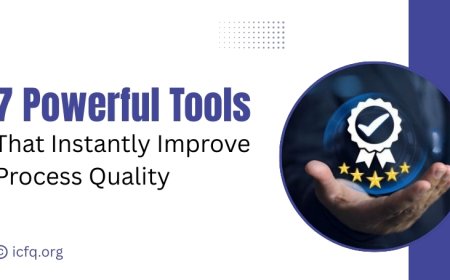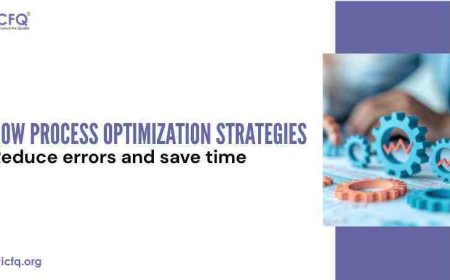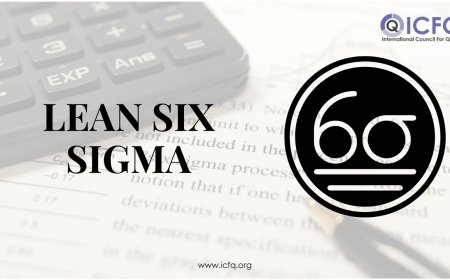Master Lean Six Sigma with Green Belt Certification
Gain a Green Belt Certification in Lean Six Sigma to improve efficiency, reduce waste, and enhance quality, driving effective process improvements in any industry.
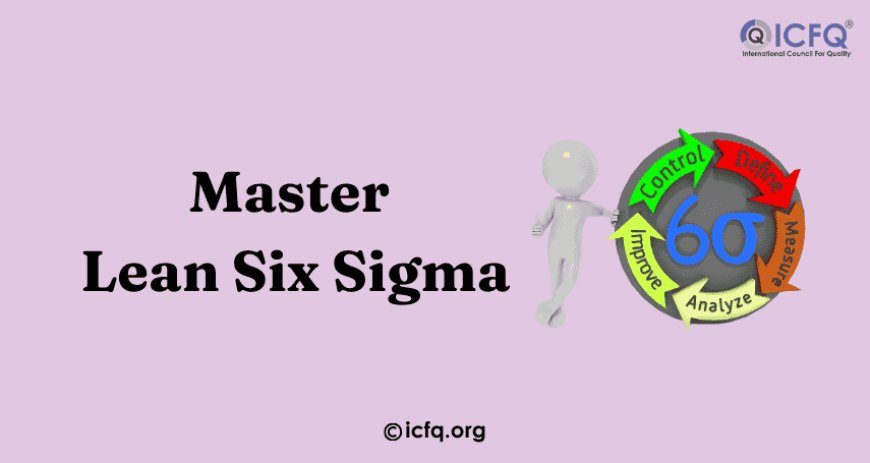
In the world of business improvement, Lean Six Sigma stands out as one of the most powerful methodologies for driving efficiency and eliminating waste. By combining Lean principles and Six Sigma techniques, organizations have achieved remarkable results in reducing defects and enhancing operational performance.
But how can you master Lean Six Sigma and set yourself apart in your career? The answer lies in earning a Green Belt Certification. This comprehensive guide will cover everything you need to know about Lean Six Sigma and why pursuing a Green Belt Certification can unlock new levels of expertise and success.
What is Lean Six Sigma and Why Is It Important?
Lean Six Sigma is a data-driven methodology designed to improve business processes by eliminating waste and reducing variation. It merges two powerful approaches:
-
Lean focuses on reducing waste and improving process speed.
-
Six Sigma aims to improve quality by identifying and removing causes of defects.
By using a set of tools, techniques, and a structured framework, Lean Six Sigma helps organizations optimize operations and increase customer satisfaction. Whether you're in manufacturing, healthcare, or services, Lean Six Sigma helps streamline workflows, save costs, and maintain high-quality standards.
Lean Six Sigma is important because:
-
It improves efficiency by eliminating unnecessary steps.
-
It enhances the quality of products and services, leading to greater customer satisfaction.
-
It helps organizations achieve higher profitability through reduced costs and improved productivity.
-
It fosters a culture of continuous improvement, ensuring long-term success.
Mastering Lean Six Sigma, especially with a Green Belt Certification, places you at the forefront of these improvements, helping your organization achieve measurable results.
Understanding the Green Belt Certification Process
The Green Belt Certification is an intermediate-level certification in Lean Six Sigma, providing professionals with a thorough understanding of process improvement tools and techniques. This certification is ideal for individuals who are directly involved in process improvement projects but not necessarily in a leadership capacity.
The Green Belt Certification process involves:
-
Training: Completing coursework that includes both theoretical learning and practical applications of Lean Six Sigma tools.
-
Project: Applying your knowledge to a real-world business problem to demonstrate your ability to improve processes.
-
Exam: Passing a certification exam that tests your understanding of Lean Six Sigma principles, tools, and techniques.
The Green Belt certification is a critical step for professionals who want to take an active role in process improvement,but are not yet responsible for managing large-scale initiatives, which are typically handled by Black Belts.
Key Principles and Methodologies of Lean Six Sigma
The success of Lean Six Sigma lies in its foundation of well-defined principles and methodologies that guide professionals in achieving continuous improvement. Some of the key principles and methodologies include:
1. DMAIC Framework
DMAIC stands for Define, Measure, Analyze, Improve, and Control. This framework is used to solve problems and implement process improvements. Green Belt professionals use DMAIC to address inefficiencies and ensure that improvements are sustainable.
2. Waste Reduction (Lean Principles)
Lean focuses on identifying and eliminating non-value-added activities in a process. By focusing on the seven wastes (overproduction, waiting, transport, extra processing, inventory, motion, and defects), Lean practitioners streamline processes and improve operational speed.
3. Statistical Tools (Six Sigma Principles)
Six Sigma uses statistical methods to analyze data and identify the root causes of process variations. Tools like control charts, hypothesis testing, and regression analysis are critical in reducing defects and improving the quality of outputs.
4. Continuous Improvement (Kaizen)
Lean Six Sigma emphasizes continuous improvement with an iterative cycle of analyzing and refining processes. Green Belt professionals are trained to lead and participate in small, ongoing improvements that accumulate over time to yield significant results.
How Lean Six Sigma Improves Operational Efficiency
The power of Lean Six Sigma lies in its ability to improve operational efficiency by reducing waste and minimizing variability. Green Belt professionals are equipped to analyze data, understand process bottlenecks, and drive improvements in a way that aligns with organizational goals.
How Lean Six Sigma drives operational efficiency:
-
Streamlining Processes: By identifying inefficiencies, Green Belt professionals help eliminate waste and improve process flow.
-
Reducing Defects: Six Sigma’s focus on defect reduction ensures that products and services meet high quality standards, improving customer satisfaction.
-
Enhancing decision-making: Data-driven decision-making allows organizations to address issues more accurately and efficiently, leading to better outcomes.
-
Improving Cycle Time: Lean principles help organizations reduce delays, speeding up processes without compromising quality.
When implemented correctly, Lean Six Sigma transforms businesses by improving how they operate, resulting in higher quality of service and faster delivery times—key factors in maintaining a competitive edge.
Tools and Techniques Used by Green Belt Professionals
Green Belt professionals are trained in a wide variety of tools and techniques that enable them to identify and resolve process inefficiencies. Some of the most commonly used tools include:
1. Fishbone Diagram (Ishikawa)
This tool is used to identify root causes of problems by visually mapping out all potential factors contributing to an issue.
2. Control Charts
Control charts help monitor process stability over time, identifying variations that require intervention.
3. Pareto Analysis
This technique focuses on the “80/20 Rule,” helping to prioritize the most critical issues that will have the greatest impact on process improvement.
4. Flowcharts and Process Mapping
These visual tools allow Green Belt professionals to analyze the current process flow and identify areas for improvement.
5. FMEA (Failure Modes and Effects Analysis)
FMEA helps identify potential failure points in a process, so corrective actions can be taken to prevent future issues.
By mastering these tools, Green Belt professionals gain the skills necessary to identify areas for improvement and implement effective solutions.
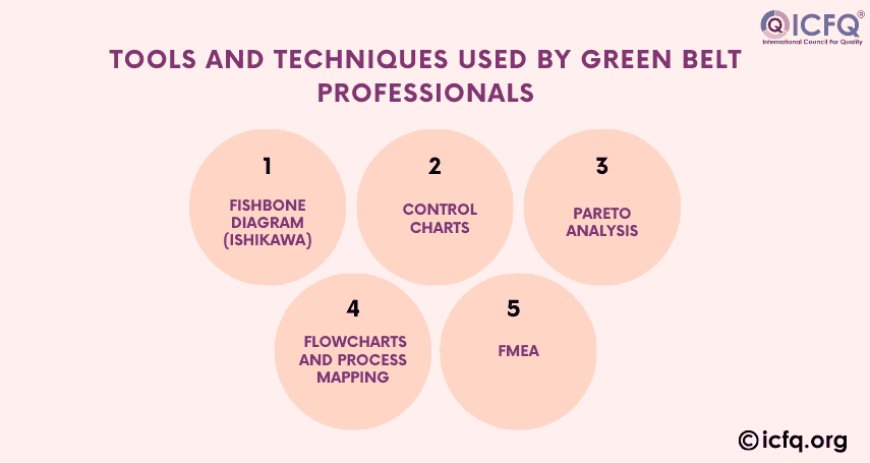
Real-World Case Studies and Applications of Lean Six Sigma
Lean Six Sigma has been successfully implemented in various industries, showcasing its versatility in solving problems and improving processes. Here are a few real-world examples:
1. Manufacturing:
A major automotive company used Lean Six Sigma to streamline its supply chain management, reducing lead times and improving inventory management. The result was a 25% reduction in operational costs and a significant improvement in delivery performance.
2. Healthcare:
A hospital system implemented Lean Six Sigma to reduce patient wait times and improve patient care efficiency. By mapping out processes and eliminating inefficiencies, they were able to cut wait times by 30%, increasing patient satisfaction.
3. Finance:
A financial institution utilized Lean Six Sigma to improve the loan approval process, eliminating unnecessary steps and reducing cycle time. The improvements resulted in a 40% reduction in processing time, benefiting both the company and its clients.
These case studies demonstrate that Lean Six Sigma principles can be applied to nearly every industry, creating lasting, measurable results.
How to Prepare and Succeed in the Green Belt Certification Exam
Successfully passing the Green Belt Certification exam requires a combination of preparation, practice, and a deep understanding of Lean Six Sigma principles. Here’s how you can prepare:
1. Understand the Core Concepts
Ensure you have a solid understanding of the DMAIC framework, statistical tools, and Lean principles. Study the key concepts and their applications in real-world scenarios.
2. Engage in Hands-On Practice
The best way to learn is by applying your knowledge to real-world problems. Participate in improvement projects, even if they are on a smaller scale, to gain practical experience.
3. Take Practice Exams
Many certification programs offer practice exams. Use these to familiarize yourself with the exam format and assess your readiness.
4. Join Study Groups or Forums
Joining study groups or online forums allows you to discuss difficult concepts, ask questions, and learn from others’ experiences.
5. Focus on Data Analysis
Green Belt professionals must be comfortable with data analysis. Practice using statistical tools and interpreting results to gain confidence before the exam.
By following these preparation steps, you’ll increase your chances of passing the Green Belt Certification exam and becoming a valuable asset to your organization.
Earning a Green Belt Certification in Lean Six Sigma opens up opportunities for personal and professional growth. It equips you with practical skills to drive continuous improvement, making you a valuable asset to any organization striving for greater efficiency and quality.










